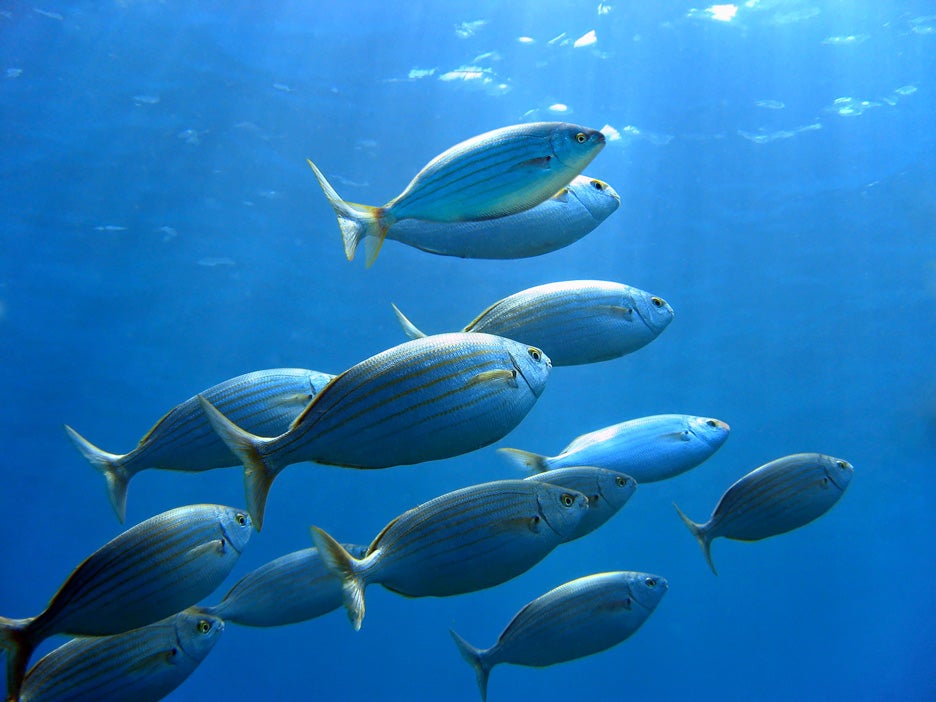Climate Change Leaves Fish and Crabs Gasping for Breath
Rising water temperatures and falling oxygen levels are forcing Atlantic cod, rock crab and other species to make for the North and South Poles, stressing the ocean food chain to the breaking point.

This page was published 10 years ago. Find the latest on Earthjustice’s work.
Another World Oceans Day is behind us, but despite growing awareness about the dangers of climate change and warming seas, water temperatures continue to creep up. Marine species are expected to shift toward the poles to cope with rising temperatures near the equator, according to a study published last week in Science.
The authors argue that rising temperatures ramp up metabolism, increasing an animal’s demand for energy and oxygen. Warmer water holds less oxygen, so the creatures are left gasping for air.
The new study focused on four species that live in different Atlantic Ocean habitats: Atlantic cod from the open ocean, Atlantic rock crab from coastal waters, sharp snout seabream from the subtropics and common eelpout—bottom-dwelling fish that live in shallow northern waters. With climate modeling, scientists were able to predict how the habitats of these species will shift based on changes in temperature and oxygen levels.
A change of just a few degrees Celsius can cause a 5 to 10 percent decrease in the ocean’s oxygen content, which could make waters near the equator uninhabitable for some species. According to the study, this shift could throw interspecies relationships off kilter, as migrating animals crowd into existing habitats.
Ocean dwellers are especially vulnerable to climate change because a small temperature rise can plunge their whole habitat into flux. Decreasing the amount of CO2 humans pump into the atmosphere can help protect oceans from further damage. Along with warming the atmosphere and consequently the seas, CO2 can also dissolve in water, making it more acidic. High acidity makes it harder for creatures like corals, sponges, mollusks, and crabs to make their shells. As these animals near the bottom of the food chain suffer, a domino effect is set off across entire marine ecosystems.
Earthjustice is hard at work to protect smaller forage fish that predators like tuna and sharks depend on, as well as species that help build the reefs and kelp forests critical to marine life. We are committed to reducing pollution, overfishing and offshore oil drilling, and to helping establish Marine Protected Areas to keep creatures safe from trawling, drilling and underwater military exercises. But it will take more than legal maneuvers to keep oceans out of the danger zone; paring down human activities that make global warning worse will take national and global consensus.
Luckily, reducing CO2 emissions is a key part of the environmental agenda. The EPA’s Clean Power Plan focuses on cutting carbon pollution from power plants, and the agency hopes to finalize the plan this summer. Going further, at this year’s international climate summit in Paris, the U.S. will pledge to reduce greenhouse gas emissions 26 to 28 percent from 2005 levels over the next decade.
Leading up to the Paris talks, every country taking part is required to submit emissions targets and climate adaptation goals. So far, ten have submitted their strategies, including the United States, the European Union, Canada and Russia. These pledges are essential for the ongoing security of the world’s oceans.
Atlantic cod, seabreams and eelpouts eagerly await the outcome of the Paris 2015 talks with their fingers (or rather, their fins) crossed.